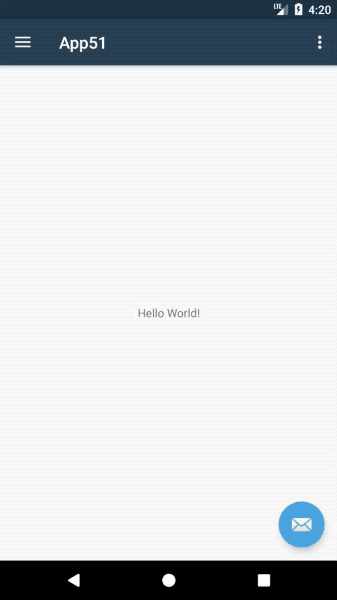Visual Studio 2017 version 15.7 Preview 3 was released today (April 9, 2018) and includes many improvements for mobile developers in Visual Studio. This release sports a brand new IntelliSense experience for Xamarin.Forms, automatic iOS provisioning, a new feature for installing Android SDKs on-demand, brand new iOS and Android project templates, and more!
The release is available as a preview, which, like all Visual Studio previews, is a separate and sandboxed installation from your stable one. This makes it safe to try without risking your production development environment. In this post, we’ll take a look at the new functionality for mobile developers in Visual Studio 2017 version 15.7 preview 3.
Improved XAML IntelliSense
Xamarin.Forms developers using Visual Studio 2017 version 15.7 will find a vastly improved IntelliSense experience. The Xamarin.Forms XAML editing experience is now powered by the same IntelliSense engine that powers WPF and UWP, bringing many enhancements to developers, including improved matching, light bulb suggestions, code navigation, linting, resource completion, and markup extension completion.
Automatic iOS Provisioning
We have made iOS device provisioning for development easier. In Visual Studio 2017 version 15.7, there’s a streamlined experience to request a development certificate, generate a signing key, add a device in the Developer Center, and create a provisioning profile, all with a single button click. The heavy lifting of provisioning an iOS device is handled for you in less than 30 seconds.

Android SDK Management
Figuring out what Android SDKs to install for mobile development can be time-consuming. Visual Studio 2017 version 15.7 adds a new Android SDK manager that takes the guesswork out of managing Android SDK installations. When opening a project for which you don’t have SDKs installed to build it, a notice will appear to help you download the required SDKs. After hitting Download & Install and accepting the relevant license agreement, the correct SDKs will automatically be installed in the background for you.
This feature is off by default, but can be enabled by going to Tools > Options > Xamarin > Android Settings > Enable Auto Install Android SDKs.
Modern iOS & Android Project Templates
Both new and seasoned developers know project templates are an important part of the app building journey. In this release, we completely rebuilt our native iOS and Android project templates so they’re better organized and easier to find in the File -> New window. We also updated our Android templates with new user experience patterns, like flyout menus or bottom tabs, so you can start building modern-day apps quicker.

Android Development Platform Improvements
Android app developers will notice additional improvements in this release, as well. We now distribute the Android Oreo SDK (Android API level 27) and Android SDK Tools 26, including support for Quick Boot, which enables your Android emulator to boot in less than five seconds. Additionally, we included the Android Device Manager as part of the Mobile development with .NET workload to help easily create, edit, and delete emulators.
When you start a compilation, Visual Studio will now boot and deploy the Xamarin runtime on your device while the compilation is taking place, thus reducing the time that you have to wait to see your application show up on device or in the emulator. With our test application, on a fresh device or emulator with no previous deployment, and including launching the Android emulator, we see the following performance gains:
| Device Type/Build Configuration | Visual Studio 2017 version 15.6 | Visual Studio 2017 version 15.7 |
|---|---|---|
| Emulator/Debug | 125s | 40s |
| Emulator/Release | 145s | 30s |
| Device/Debug | 115s | 95s |
| Device/Release | 104s | 65s |
We also rebuilt the property panel for the Android designer to include rich support for things like color brushes and accessibility.
Smaller, Faster iOS Apps
Our iOS, macOS, watchOS, and tvOS applications now feature a fully static type system. This brings several benefits:
- Smaller applications: The linked Xamarin.iOS.dll is 30–50% smaller, since information (e.g. custom attributes) needed only at build time can be removed. This also allows the linker to remove more code than before (since less code is being referenced).
- Faster application startup: More registration work is done at build time instead of runtime. This removes the need to use (slow) reflection on custom attributes to register types and methods.
- Reduced memory usage: With this work, we also reduced the memory required for applications. Initial (startup) memory requirement is down 30% for a minimal application and 20% for extensions. This makes it easier to create some types of extensions where iOS imposes memory limits (for example, 16MB for Today extensions).
| Visual Studio 2017 version 15.6 | Visual Studio 2017 version 15.7 | Difference | |
|---|---|---|---|
| Minimal iOS App | 7.52 MB | 4.98 MB | -2.84 MB (-34%) |
| Minimal iOS Extension | 5.40 MB | 4.14 MB | -1.26 (-23%) |
*Averages measured by running the app in Release mode, using Instruments (Allocations).
Try the Preview Today!
With all the improvements in Visual Studio 2017 version 15.7 preview 3, we need your feedback to help make this an amazing release. Visual Studio previews can be installed side-by-side with stable, and are sandboxed to prevent any side effects from affecting your primary development environment.
To try all of the things mentioned in this blog, download the Visual Studio Preview installer and select the Mobile development with .NET workload.
For a complete overview of everything new for developers in Visual Studio 2017 version 15.7 previews, check out the release notes.
